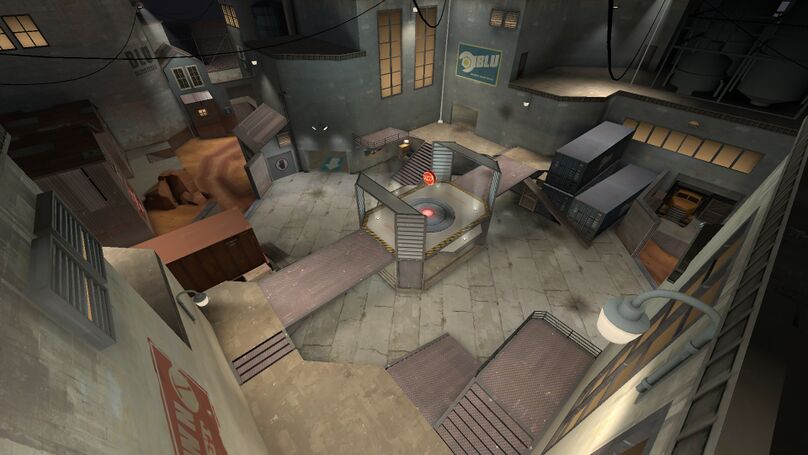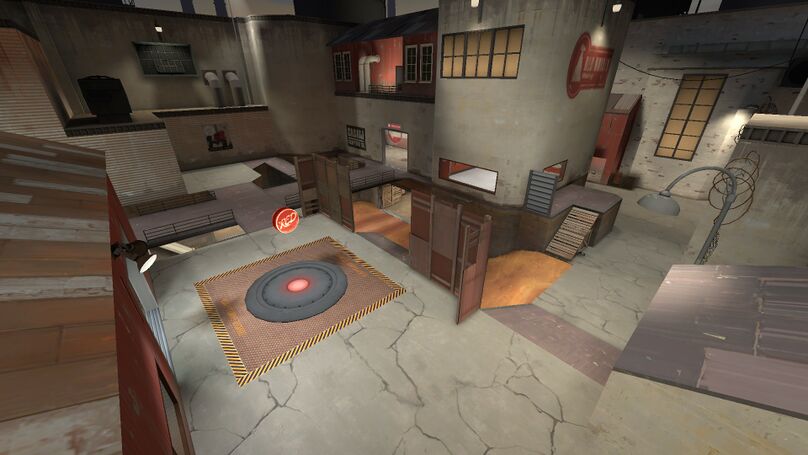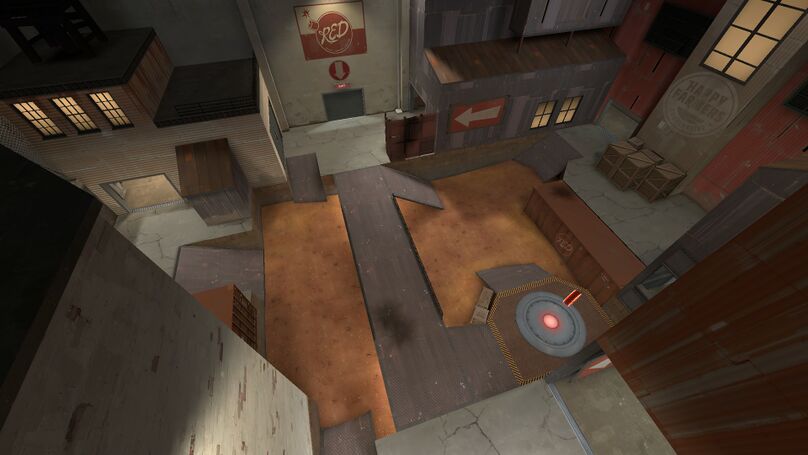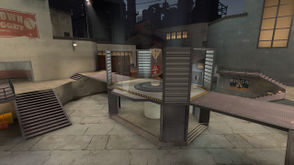Metalworks
cp_metalworksWelding is a fabrication or sculptural process that joins materials, usually metals or thermoplastics, by causing fusion, which is distinct from lower temperature metal-joining techniques such as brazing and soldering, which do not melt the base metal. In addition to melting the base metal, a filler material is typically added to the joint to form a pool of molten material (the weld pool) that cools to form a joint that is usually stronger than the base material. Pressure may also be used in conjunction with heat, or by itself, to produce a weld.
Although less common, there are also solid state welding processes such as friction welding or shielded active gas welding in which metal does not melt.
Some of the best known welding methods include:
Oxy-fuel welding – also known as oxyacetylene welding or oxy welding, uses fuel gases and oxygen to weld and cut metals. Shielded metal arc welding (SMAW) – also known as "stick welding or electric welding", uses an electrode that has flux around it to protect the weld puddle. The electrode holder holds the electrode as it slowly melts away. Slag protects the weld puddle from atmospheric contamination. Gas tungsten arc welding (GTAW) – also known as TIG (tungsten, inert gas), uses a non-consumable tungsten electrode to produce the weld. The weld area is protected from atmospheric contamination by an inert shielding gas such as argon or helium. Gas metal arc welding (GMAW) – commonly termed MIG (metal, inert gas), uses a wire feeding gun that feeds wire at an adjustable speed and flows an argon-based shielding gas or a mix of argon and carbon dioxide (CO2) over the weld puddle to protect it from atmospheric contamination. Flux-cored arc welding (FCAW) – almost identical to MIG welding except it uses a special tubular wire filled with flux; it can be used with or without shielding gas, depending on the filler. Submerged arc welding (SAW) – uses an automatically fed consumable electrode and a blanket of granular fusible flux. The molten weld and the arc zone are protected from atmospheric contamination by being "submerged" under the flux blanket. Electroslag welding (ESW) – a highly productive, single pass welding process for thicker materials between 1 inch (25 mm) and 12 inches (300 mm) in a vertical or close to vertical position. Electric resistance welding (ERW) – a welding process that produces coalescence of laying surfaces where heat to form the weld is generated by the electrical resistance of the material. In general, an efficient method, but limited to relatively thin material. Many different energy sources can be used for welding, including a gas flame, an electric arc, a laser, an electron beam, friction, and ultrasound. While often an industrial process, welding may be performed in many different environments, including in open air, under water, and in outer space. Welding is a hazardous undertaking and precautions are required to avoid burns, electric shock, vision damage, inhalation of poisonous gases and fumes, and exposure to intense ultraviolet radiation.
Until the end of the 19th century, the only welding process was forge welding, which blacksmiths had used for centuries to join iron and steel by heating and hammering. Arc welding and oxyfuel welding were among the first processes to develop late in the century, and electric resistance welding followed soon after. Welding technology advanced quickly during the early 20th century as the world wars drove the demand for reliable and inexpensive joining methods. Following the wars, several modern welding techniques were developed, including manual methods like SMAW, now one of the most popular welding methods, as well as semi-automatic and automatic processes such as GMAW, SAW, FCAW and ESW. Developments continued with the invention of laser beam welding, electron beam welding, magnetic pulse welding (MPW), and friction stir welding in the latter half of the century. Today, the science continues to advance. Robot welding is commonplace in industrial settings, and researchers continue to develop new welding methods and gain greater understanding of weld quality.
Usage in competitive
| 6v6 | |||||||||||
|---|---|---|---|---|---|---|---|---|---|---|---|
| Season 20 | Season 23 | Season 9 | |||||||||
| Season 19 | Season 22 | ||||||||||
| Season 18 | Season 21 | ||||||||||
| Season 20 | |||||||||||
| Season 19 | |||||||||||
| Season 17 | Season 17 | Season 18 | Season 11 | Season 8 | |||||||
| Season 16 | Season 16 | Season 17 | Season 10 | ||||||||
| Season 14 | Season 16 | ||||||||||
| Season 15 | |||||||||||
| Season 13 | Season 14 | Season 7 | |||||||||
| Season 12 | |||||||||||
| Season 13 | |||||||||||
| Season 11 | |||||||||||
| Total inclusions | 9 out of 41 | 2 out of 46 | 11 out of 30 | 2 out of 38 | 3 out of 21 | ||||||
Bold italics denotes the current or latest season
Locations
| Metalworks — The middle point |
|---|

Valley Lower Lobby / Main Elbow / Banana Point Crate Upper larry / Balcony Truck |
| Metalworks — The second point |
|---|

Underpass / Ground Alleyway Main / Metal Point Bridge |
| Metalworks — The last point |
|---|

Far Left Shed Shutter Main Far Right |
References
| List of active competitive Team Fortress 2 maps | |
| 3CP | Warmfrost |
| 5CP | Badlands · Granary Pro · Gullywash · Metalworks · Process · Reckoner · Snakewater · Sunshine · Villa |
| Attack/Defend | Steel |
| King of the Hill | Airfield · Ashville · Bagel · Brazil · Cascade · Clearcut · Coalplant · Lakeside · Product · Warmtic |
| Payload | Badwater · Borneo · Swiftwater · Upward · Vigil |
